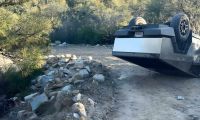This past week, a Tesla update done over the air (OTA) failed and left owners with cars that lacked important safety features. It also disabled Autopilot. The failed update was corrected about a day later.
One of the best sources for information on this failed Tesla update was Consumer Reports (CR) who purchased a $59,000 Model 3 to add to its test fleet. As many readers of Consumer Reports knows, the company prefers to own, rent, or lease the vehicles it tests rather than use media fleet vehicles. CR was one of the first publications to report the brake issues with its Model 3 and Tesla eventually fixed the brake issue using an OTA update.
CR says that its failed update was a minor hassle and that its engineers were able to apply the software patch the next day. However, it left the folks at CR with less confidence in the car's safety. They wrote the following:
“On top of losing the functionality,” Fisher says, “we were very concerned by the lack of information provided to owners about the nature of what was wrong with our car.” On the Model 3’s sole screen, there were messages noting that the update had failed, but it was never clear which systems were still working and which ones were not. It wasn’t even clear whether the car was safe to drive.
CR wasn't alone. Extreme Tech reports that owners received an e-mail after the failed update from Tesla stating “This is a currently known issue and our engineer team is hard at work resolving the problems that have occurred.”
Despite the hype over Tesla OTA abilities, it isn't the only company that has the capability, nor is it the only company that performs updates remotely. A Lexus OTA failed in 2016 highlighting that Lexus has the capability. Sort of.













Comments
They certainly need more
Permalink
They certainly need more information and transparency with updates, and especially for a failed failed update. But does CR actually know that there were any safety systems compromised? or were they just needlessly worrying. It could be nothing at all to worry about, but Tesla does need to be specific in telling customers quickly about the status and success of updates, if only to keep nervous people from worrying. I will be happy to own a car that can repair and update itself automatically and free of charge, but it needs to happen when the car isn't running, and it needs to revert to the last known good rev if something fails in the install.